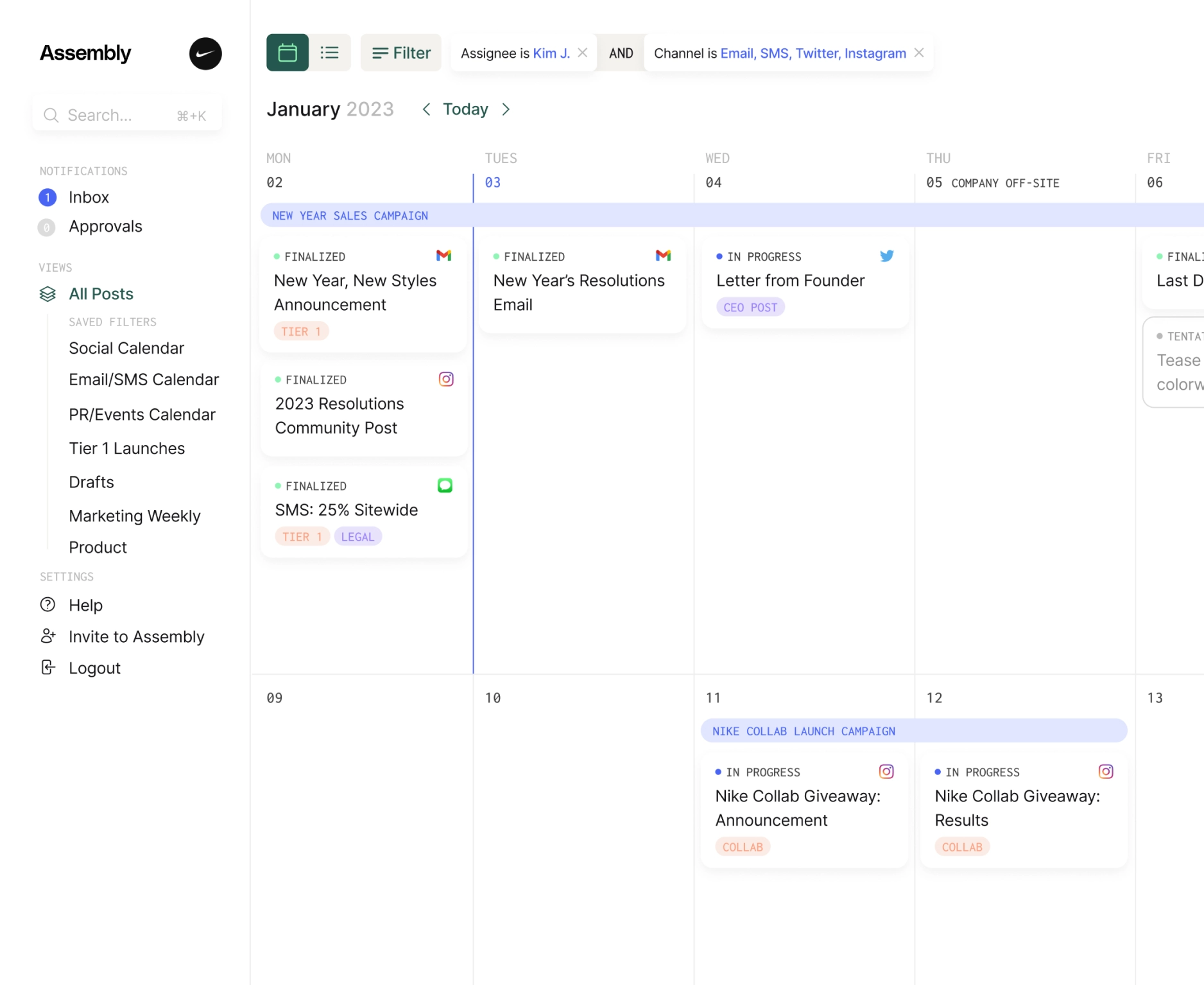
Why Credibility Matters: Crafting LinkedIn Content That Stands Out

We spoke with Alex Boyd, founder of RevenueZen, a leading B2B growth marketing agency known for its expertise in LinkedIn content strategies and SEO. In this Q&A, Alex shares his valuable insights on the evolution of LinkedIn content, successful strategies for engaging audiences, and the role of AI in modern content creation.
What is RevenueZen?
RevenueZen is a growth marketing agency for B2B companies. About two-thirds are SaaS, one-third are professional services companies. We started seven years ago as a consultant and SDR/sales revenue consultancy, then grew a big SDR business until we pivoted into content marketing SEO. We created a LinkedIn ghostwriting practice long before all the influencers you see today. We've been an OG of LinkedIn ghostwriting.
What are 2-3 things you’ve noticed have changed in regards to content and LinkedIn content?
Seven years is an eon in social media algorithm time. Some of the biggest things that changed are it's become way more popular. Before ChatGPT started coming on, people were saying, “Just use AI to write your comments and write your posts”. There was this crop of ghost writers that popularized a certain style of writing on LinkedIn for maximizing engagement and reach. What we always had done before that is not maximize reach per se, but credibility. One core principle has always been, “How can we use LinkedIn to demonstrate your credibility in a particular area?” Because if you're just getting followers and they don't convert to clients that are paying you five figures, it doesn't matter.
Tooling is the next one. There used to be far fewer tools. Six years ago, we would have people log into client LinkedIn accounts, open up Sales Navigator, and mash the connection request button all day. Now there's more complex array of tool sets that you're going to use. We're an Assembly customer, so there's the concept of having your scheduling tool automatically like and repost and be able to repurpose content. That's new and obviously saving time.
It's gotten easier in the sense that there are more tools available, harder in the sense that there's more saturation, more information overload, and more need to cut through the noise with a clear narrative and not fall for the trap of just getting attention at the cost of actual influence and quality message.
What types of companies succeed vs. fail on LinkedIn?
The biggest fail is not willing to treat LinkedIn as its own format. Take LinkedIn as a channel; the same angle or concept, you have to approach with a LinkedIn-specific angle, or it's going to fail. Your company feature update blog is going to look different in LinkedIn format than it will on your blog.
A big common one too is not being willing to accept that one part of that format is having an opinion. There's a lot of this like sort of B2B corporate buttoned-upness where people think they just deliver the information, just be circumspect and anti-risk, where that's in direct conflict to what you need on a social media channel, where people don't need information. They can get information from a search engine.
They come to social media, particularly LinkedIn for opinion perspective. It shouldn't be overly polarizing for the sake of being polarizing, but you should have an opinion that stands out. Having the courage to disagree and have your own opinion is one most commonly missed part of treating LinkedIn like its own channel, which is different from traditional channels, from white papers, blogs, and so forth.
Do you have a favorite campaign?
The RB2B team, Adam Robinson, has been crushing LinkedIn lately. They’re publicizing numbers, specifics, and financials. They’re showcasing credibility by saying, “We hit 21 million ARR last month.” You’re bootstrapped, you have 20 million ARR; you bought credibility by sharing information.
Do you need to share financials to get credibility? No, you can have an opinion and do that differently. But they found a way to buy credibility with shared information. So the question is for you, for whoever is listening, what is your way of buying credibility? Is it the quality of your knowledge? Is it something you can share? Not being afraid to have an opinion. They even published the Cease and Desist they got from 6sense. That’s bold.
Walk me through the first 30-60-90 days of creating a content calendar
Start with a strategic narrative. What is the message you’re taking to the market and how is it different? This tracks back to the Challenger sales model—what is the new way you are thinking about what you’re doing? In this case, social media, not just scheduling but social media operations in general. What’s wrong with it?
First questions would be: Tell me about the status quo of social media operations you’re against. What’s broken about it? We have a workshop about what’s broken in the current state of the industry. We refine that, ask good questions, play devil’s advocate, and battle test to uncover insightful shifts from the old way to the new way.
From there, post ideas naturally spring forth. So, when you have this 10 page document full of really good stuff—your story, your new way, mindset shifts, insights, unique selling propositions, and unique ideas—the posts and hooks write themselves.
From this one angle or concept, “Can we get a two or three text versions, one or two carousels, one video, one podcast idea, etc.?” So you can mix and match them at your format so well.
Tactically in Assembly, connect more profiles, get automatic likes and reposts on the first posts, and do outbound commenting for 20 minutes before and after posting to juice it up. Ensure you’re saying things people want to hear. Is it narrative-driven or just random tips? Mix formats, make it entertaining, and do silly numbers to get things off the ground.
What does the future of content look like, especially with trends like TikTok SEO and video content?
Someone just asked me this recently, they said, “Everyone’s doing long-form video. Should I be doing long-form video?” My answer was, “Maybe, maybe not.” The format you choose should match the message. Does what you’re talking about cater well to YouTube? If so, you should probably leverage it. If not, then maybe not. Is it more text, video, or carousel? In terms of SEO, no matter the format, the job of a search engine is to organize information and deliver it effectively. The closer you get to how a human would do that at scale, the better.
Some might say there are early growth tactics and temporary advantages. For example, on LinkedIn, there's a particular format where you have the lead magnet you wrote, the GIF of you scrolling through it to show how good it is, and comment to receive it.
There are tactics to exploit, but primarily, are you giving search engines the ability to do their job easier? Think about how you can make their job easier to find your information and serve it up to your buyers. Most B2B companies aren’t even doing basic text website SEO. Max that out first before considering a major investment in TikTok. Get the fundamentals in order, then get fancy once you’re good at it.
When is a good time to start investing in content as a B2B company?
ASAP. On day one of starting my company, I started posting on LinkedIn. It was free. It took 15 minutes to write a post. We got seven figures of revenue quickly from that. The founder of Lake Checkout, Greg Eisenberg, reached 10,000 followers before they started coding.
Start building your distribution channels before you start your product. If you’ve already started, start now with LinkedIn or Twitter/X, or whatever suits you best. There’s no excuse not to pre-build distribution.
In a super competitive space, it may not make sense to do SEO immediately. In a lightly competitive space, it makes sense to spend a day on SEO for hyper-relevant content. There’s usually low-hanging fruit.
What’s your take on using AI for content?
The reason AI appeals to so many people is it can get tiring to keep doing social. You bring in GPT, and it does your job. It doesn’t work like that because if you outsource your thinking to technology, you atrophy your brain, and you can no longer think as well. To figure out whether to use AI or not, ask: Does this require thinking? Am I accountable for having people know I wrote this post or comment?
Focus on other aspects of social media ops, like Assembly. Assembly doesn’t primarily write posts for you; it makes it easier to get posts live, scheduled, and operated. You can use AI for repurposing with it, which is good.
I think the right use of AI is a more limited assistant or copilot use, but many use it as a substitute replacement. Imagine Wendy’s social media team on Twitter. No GPT can replicate that. You’re mortgaging your future for a small time savings, a shortcut that doesn’t pay off.
Ready to start growing on social media?
Assembly is an end-to-end social media management tool. Join 500+ marketers and agencies who have made the switch.






